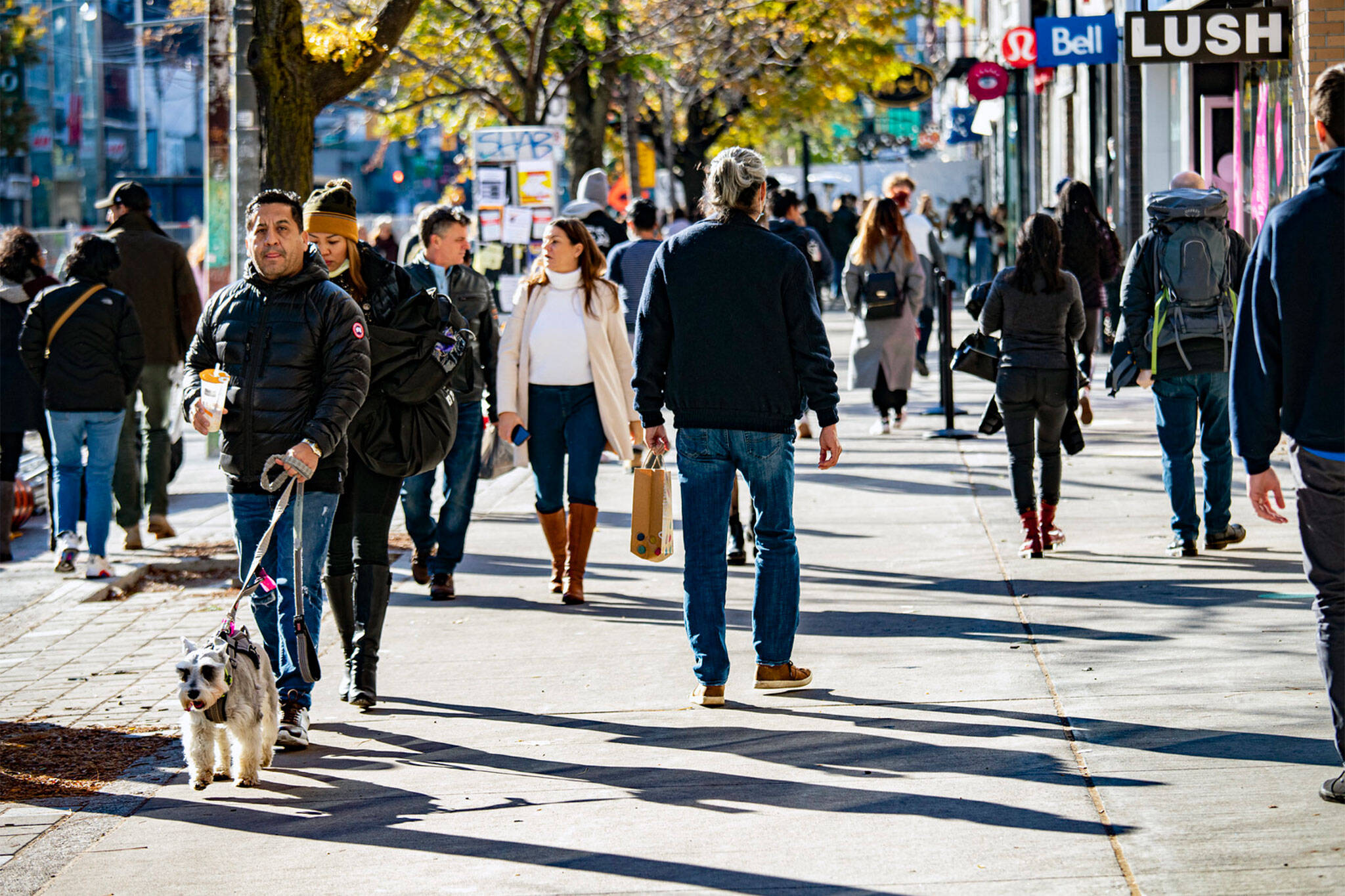
Canada just set an all-time-record for population growth
Canada saw a new all-time population growth record in 2022, when it recorded an increase of 1,050,110 people living in the country. This is equivalent to the entire city populations of Edmonton or Ottawa.
Newly released demographic change estimates from Statistics Canada indicate the country marked the first 12-month period in its history where the national population grew by over one million people.
This growth represents a 2.7 per cent year-over-year increase from 2021, which is the highest annual population growth rate on record since 1957, when there were a high number of births during the post-war baby boom and the high immigration volume of Hungarian Revolution refugees.
For 2022, 95.9 per cent of the population growth was driven by international migration.
In particular, temporary immigration was the leading contributor for Canada's growth last year, with the country welcoming 607,782 non-permanent residents in addition to the 437,180 immigrants.
Both types of newcomers are the highest levels on record, and it is the first time the number of new non-permanent residents exceeded the number of new immigrants over the same period.
Population by the numbers
In total, as of January 1, 2023, Canada's estimated population is 39,556,248.
With 2023 expected to be another very strong year for flows, Canada is expected to reach and exceed 40 million people before the end of the year.
According to federal statisticians, based on comparisons with 2021 data, which is the most recent data, Canada would rank first in population growth amongst the Organisation for Economic Co-operation and Development (OECD), and top 20 in the entire world.
Nearly all countries with a higher pace of population growth were in Africa.
As well, Canada would also be by far the leader amongst G7 countries for population growth in 2022.
For population growth over the fourth quarter of 2022, Canada saw 273,893 more people or a quarter-over-quarter growth rate of 0.7 per cent, which is the highest rate of growth recorded in a fourth quarter since 1956.
Immigration accounted for 97.7 per cent of the growth over the quarter, including 83,152 immigrants and 196,262 non-permanent residents.
In 2022, every province and territory saw a population increase.
Ontario is leading the country
In real numbers, Ontario led the country in population growth, adding 445,495 people or the equivalent of the city of Halifax's population. This was followed by Alberta's resurgence, with 164,793 people moving to the province last year.
Quebec's population growth of 149,904 exceeded British Columbia's tally by only about 2,500 people. Such a figure is equivalent to adding the cities of Coquitlam, BC or Saguenay, Quebec.
In terms of population growth rate, Prince Edward Island recorded the highest percentage (+4.2 per cent), followed by Alberta (+3.7 per cent), Nova Scotia (+3.5 per cent), New Brunswick (+3.3 per cent), Ontario (+3.0 per cent), and British Columbia (+2.8 per cent).
Here is a breakdown of each province's population growth estimate in 2022:
British Columbia
- January 1, 2022: 5,251,578
- anuary 1, 2023: 5,399,118 (+147,540; +2.8 per cent)
Alberta
- January 1, 2022: 4,482,385
- January 1, 2023: 4,647,178 (+164,793; +3.7 per cent)
Saskatchewan
- January 1, 2022: 1,185,311
- January 1, 2023: 1,214,618 (+29,307; +2.5 per cent)
Manitoba
- January 1, 2022: 1,398,303
- January 1, 2023: 1,431,792 (+33,489; +2.4 per cent)
Ontario
- January 1, 2022: 14,940,912
- January 1, 2023: 15,386,407 (+445,495; +3.0 per cent)
Quebec
- January 1, 2022: 8,637,650
- January 1, 2023: 8,787,554 (+149,904; +1.7 per cent)
New Brunswick
- January 1, 2022: 799,245
- January 1, 2023: 825,474 (+26,229; +3.3 per cent)
Newfoundland and Labrador
- January 1, 2022: 522,501
- January 1, 2023: 531,948 (+9,447; +1.8 per cent)
Nova Scotia
- January 1, 2022: 1,002,441
- January 1, 2023: 1,037,782 (+35,341; +3.5 per cent)
Prince Edward Island
- January 1, 2022: 166,858
- January 1, 2023: 173,954 (+7,096; +4.2 per cent)
These population increases are, of course, driven by the federal government's ambitious elevated immigration targets to help address the nation's dire labour shortage due to the growing pace of retirements, and the impacts to the labour capacity as a result of the pandemic.
Population growth will also help Canada sustain long-term economic growth amidst falling birth rates.
Canada's refugee program for Ukrainians fleeing Russia's invasion also added to the number of non-permanent residents in 2022, in addition to increases in the number of work and study permits.
In late 2022, the federal government further increased its immigration targets over the next three-year period through 2025. It plans to welcome 465,000 immigrants in 2023, 485,000 in 2024, and 500,000 in 2025.
But there are growing concerns the elevated immigration targets are not matched by a corresponding effort to drastically increase housing supply, which could significantly exacerbate housing affordability issues, especially in the immigration hotspots of Ontario and British Columbia — where housing affordability issues are also most pronounced.
A recent analysis by financial services firm Desjardins estimates Canada needs 100,000 more annual housing starts on average in 2023 and 2024 to offset the home price gains that can be expected when the level of supply increases do not match changes in demand.
Housing starts, the stage at which construction begins on a residential building, would need to increase by about 50 per cent across the country relative to the current baseline.
This would be the highest level of housing starts in Canadian history, even though housing starts are already at near historic levels.
Latest Videos
Latest Videos
Join the conversation Load comments







